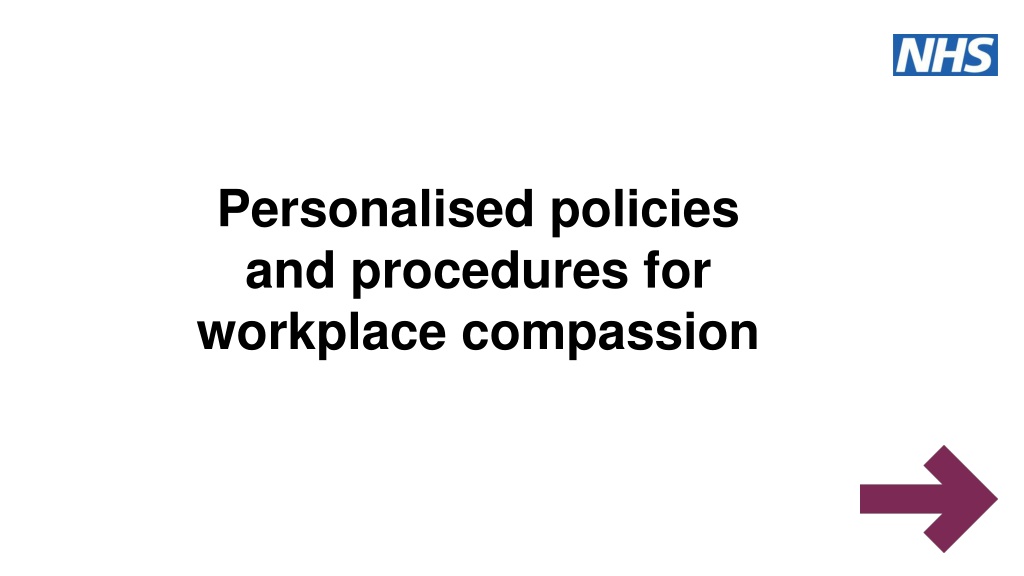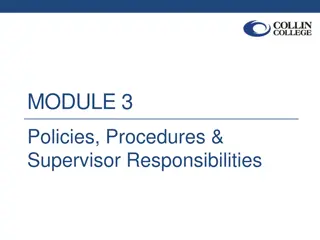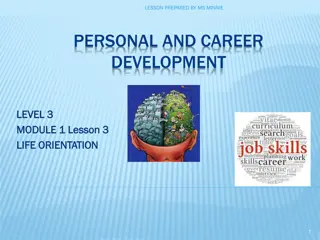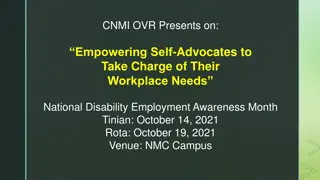Cultivating Workplace Compassion: Policies, Procedures, and Examples
Discover how personalised policies and procedures promote workplace compassion, emphasizing the importance of treating staff with care and dignity. Explore key principles, measures to support health and wellbeing, and examples of compassionate policies in action. Learn how culture and compassion intertwine interpersonally, inspiring kindness and empathy in creating more compassionate workplaces. Witness the impact of workplace compassion as a core business model through inspiring examples and case studies.
- Compassionate Workplace
- Policies and Procedures
- Employee Wellbeing
- Workplace Culture
- Organizational Compassion
Download Presentation

Please find below an Image/Link to download the presentation.
The content on the website is provided AS IS for your information and personal use only. It may not be sold, licensed, or shared on other websites without obtaining consent from the author. Download presentation by click this link. If you encounter any issues during the download, it is possible that the publisher has removed the file from their server.
E N D
Presentation Transcript
Personalised policies and procedures for workplace compassion www.england.nhs.uk
Personalised policies and procedures .key principle If we want staff to treat patients with compassion and respect and care and dignity, then we must treat staff with compassion and care and respect and dignity. Michael West www.kingsfund.org.uk/audio-video/michael-west-leading- culturescompassionate-care www.england.nhs.uk
Wide range of measures to support health and wellbeing Special attention is needed to the importance and significance of compassionate workplaces. Consistently thoughtful, caring and empathetic towards one another www.england.nhs.uk
Both culture and compassion are enacted interpersonally While workplace compassion exists in the details of policies and procedures, in terms of cultures and values it is enacted interpersonally between members of staff. www.england.nhs.uk
Examples of policies and procedures applied compassionately with individual staff members Space and time for staff to listen and talk about difficult emotions Supporting colleagues through mental health crisis and recognising that adverse behaviour is not misconduct On the loss of his mum colleagues bought my husband a tree to remember her support and sharing when things go wrong recognising what matters to one another www.england.nhs.uk
Inspiring examples and case studies We don t need to wait for leadership or policy or permission to be kind and thoughtful or to act with empathy towards those that we work with. We can all, whatever our roles, find ways and take actions to contribute to creating more compassionate workplaces www.england.nhs.uk
Workplace compassion as a business model In this video clip Cherry describes how creating a culture of workplace compassion was at the core of their organisational business model and shaped their ways of thinking and working. https://www.youtube.com/watch?v=qQNC1GtJ0RM www.england.nhs.uk
From policy to experiences having all the right business philosophies and management practices is meaningless unless you treat the person right in front of you, right now, the right way. Sutton (2007) www.england.nhs.uk
How policies and procedures can impact negatively on workplace compassion Too restrictive HR policies that are difficult to adapt to individual circumstances. When policies and procedures are followed to the letter, to the point where you can no longer see or be compassionate towards the person involved. www.england.nhs.uk
A problem with policies and procedures Some of the structures that we set up in organisations which then become behavioural norms, supported by policies and procedures, can lead us to focus on punishment when things go wrong, rather than encouraging us to consider what might be happening with the individual. (Worline and Dutton, 2017). www.england.nhs.uk
So what does this mean for our policies and procedures? Examples of how our policies are applied compassionately in individual circumstances? Suggestions for how we could do this better. www.england.nhs.uk
Our policy and procedural barriers to a compassionate workplace culture Examples of how our policies get in the way of workplace A personal action to contribute to the compassionate application of policy or procedure www.england.nhs.uk
Table discussion: How can you and your teams/colleagues take steps to improve the ways that policies and procedures create and improve workplace compassion to the benefit of experiences of care for all? www.england.nhs.uk
Call to action Everyone can take action now, today, to create a more compassionate workplace for themselves and for others. Starting straight away my practical action to improve the way in which a policy or procedure is applied and personalised with compassion is www.england.nhs.uk
15 www.england.nhs.uk























![Workplace Violence Prevention Plan in [District]: Definitions, Elements, and Implementation](/thumb/117038/workplace-violence-prevention-plan-in-district-definitions-elements-and-implementation.jpg)

























